
While in Thailand for the 23rd Electromagnetic Induction Workshop (EMIW2016), I was fortunate enough to get to visit the famous Chanthaburi gem district in Thailand. After reading the section from the seminal USGS report on Thai geology (Geologic reconnaissance of the mineral deposits of Thailand, USGS Bulletin 984) that pertains to the Chanthaburi gem district (see pages 144-147 in that bulletin, pages 154-157 in the PDF file), I decided to pay a visit to Wat Khao Ploi Waen, which lies west of Chanthaburi on top of a small, isolated hill. (This hill is called Khao Ploi Waen.)
In Thai, wat means temple or monastery. The Thai people are very spiritual; there are temples and shrines to the Buddha everywhere. Wat Khao Ploi Waen is a larger temple complex (although it still small compared to other temples in the country) that happens to be located on the eroded remnants of an alkali basalt volcano. Alkali basalts are special because the lavas that make them often carry ripped-up fragments of the lower crust and uppermost mantle. The rubies and sapphires (which are actually the same mineral, corundum) that are found in Thailand were brought up to the Earth's surface in such alkali basalt eruptions several million years ago. The exact details of how the corundum forms in the lower crust and how the alkali basalt magmas pick up those crystals along the way are still debated, but scientists have established that, across the world, alkali basalts are often responsible for creating gemstone deposits. They can carry sapphires, rubies, zircon, garnet, and spinel, among many other gem minerals. Alkali basalts are relatively rare on Earth; this is one of the reasons why good gemstone deposits are also rare. Thailand, and several other countries in Southeastern Asia, are fortunate to have many alkali basalt flows. (For a discussion of how gemstones end up in alkali basalts at the Earth's surface, see Gem Corundum in Alkali Basalt: Origin and Occurrence by Levinson and Cook, published in Gems & Gemology; and Models of corundum origin from alkali basaltic terrains: a reappraisal by Sutherland and others, published in Contributions to Mineralogy and Petrology.)
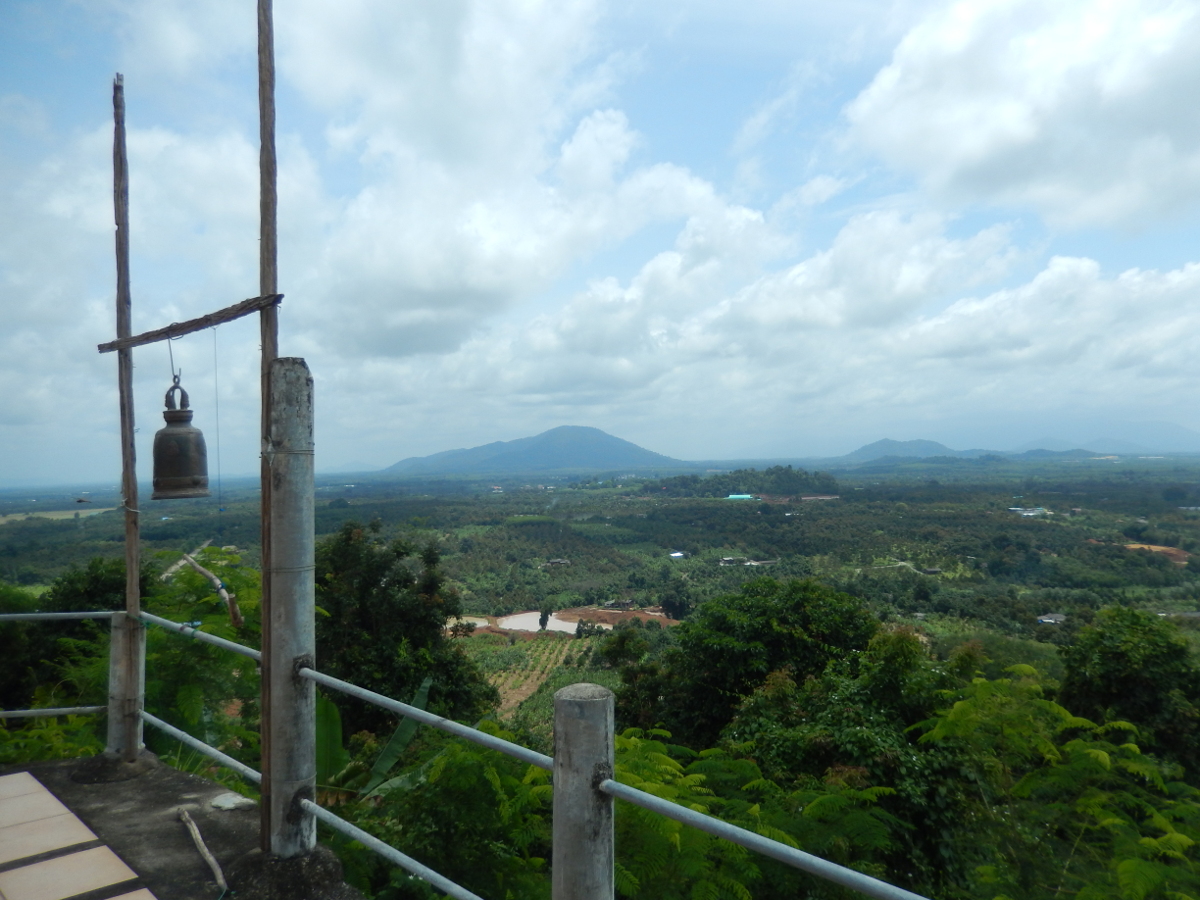 |
Thailand's tropical climate very readily weathers rocks away. Much of the landscape around Khao Ploi Waen is mantled in over a meter of red lateritic soil (rich in iron) that forms from weathering of basalt. However, just by looking at some of the gravels on Khao Ploi Waen, I could easily see exotic rocks and minerals that had been transported from deep within the Earth to the surface by this alkali basalt eruption. Mantle xenolith fragments (pieces of rocks that constitute the mantle) are abundant. Xenocrysts (exotic crystal fragments carried from deep within the Earth by magma) of black spinel are also quite common. I found large, rounded black spinel crystals in many of the pieces of basalt that had survived weathering. The spinels are rounded because they were partially absorbed during transport by the magmas that brought them to the surface.
In this kind of tropical setting, it is generally easiest to find the gemstones in the weathered alluvial materials (soils and gravels). Because gemstones are generally dense (for example, ruby and sapphire are four times more dense than water and almost two times more dense than the ubiquitous mineral quartz), they are not so readily transported by water. They therefore are often concentrated in the alluvial material close to the source. This process is essentially the same as how placer gold deposits form: the high density of the material of interest makes it concentrate in somewhat predictable ways. During my visit to Khao Ploi Waen, I noticed two locals looking through alluvial material that had recently slumped down onto the roadway. They were likely looking for gemstones.
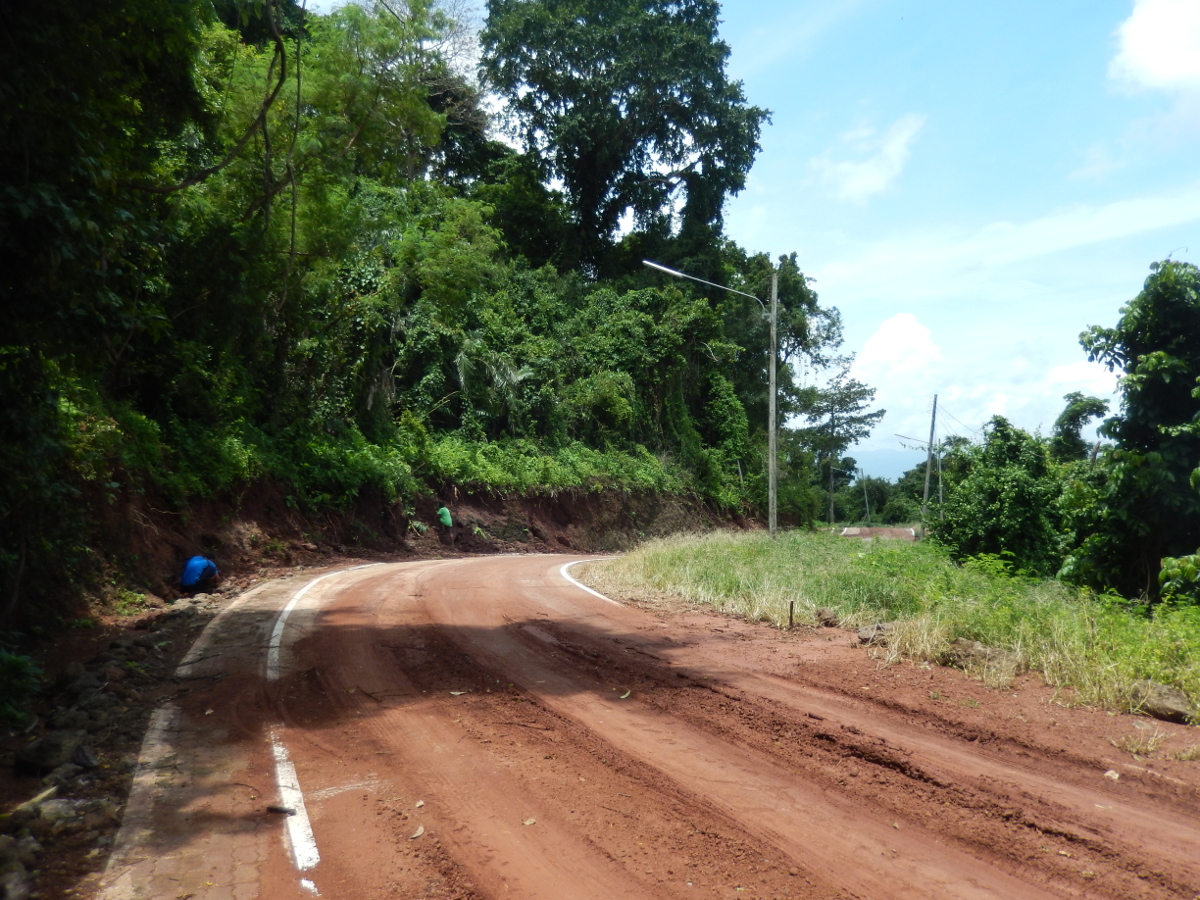 |
After my visit to Khao Ploi Waen, I stopped by the Chanthaburi gem trading area. Although gem mining in the Khao Ploi Waen area has essentially ceased because the deposits have been exhausted, Chanthaburi remains a major global hub for gem trading due to its thriving gem cutting and gem heat-treating industry.
I visited the gem trading area on a Friday afternoon, when gem trading activities were going strong. Although there are storefronts that sell cut stones and jewelry throughout much of downtown Chanthaburi, the wholesale trading occurs at one intersection in downtown. Here, buyers and dealers meet to examine merchandise and negotiate a sale. (See this article about the Chanthaburi gem trade from the Gemological Institute of America.)
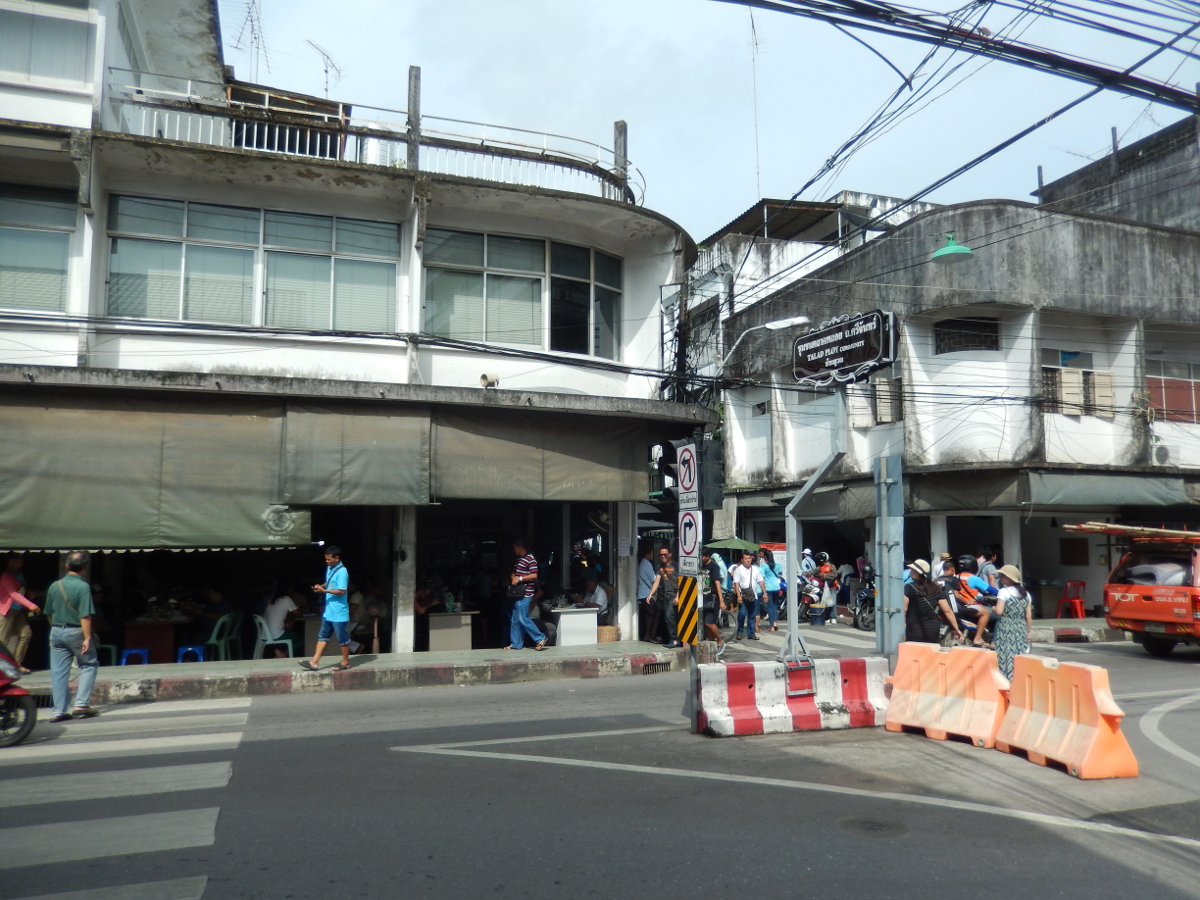 |
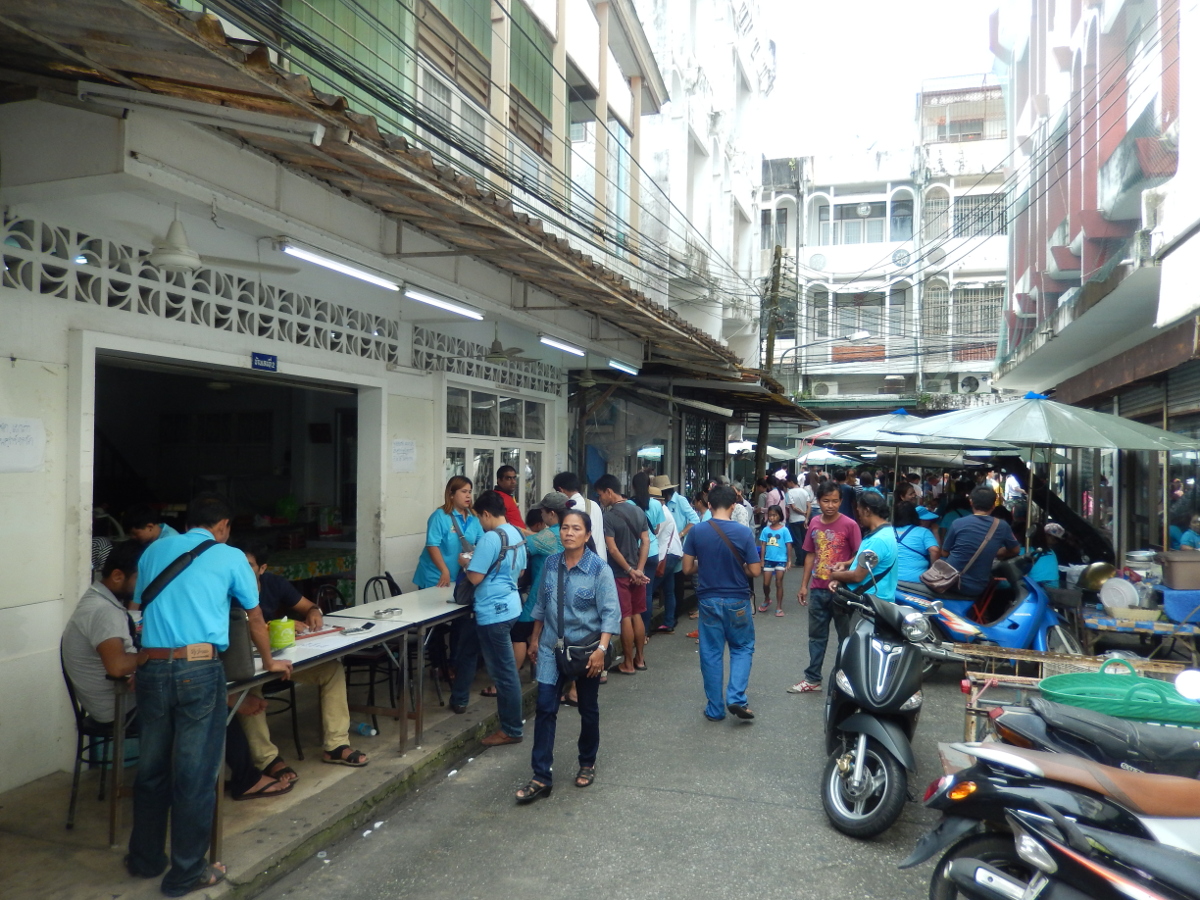 |
I myself participated in a little gem trading; Mike of Mike's Gems gave me a few good deals on some local uncut stones. If you visit Chanthaburi and would like to pick up some gemstones, I recommend doing business with Mike. He is very friendly, he has a good selection of stones, he is a fair negotiator, and his English is excellent.
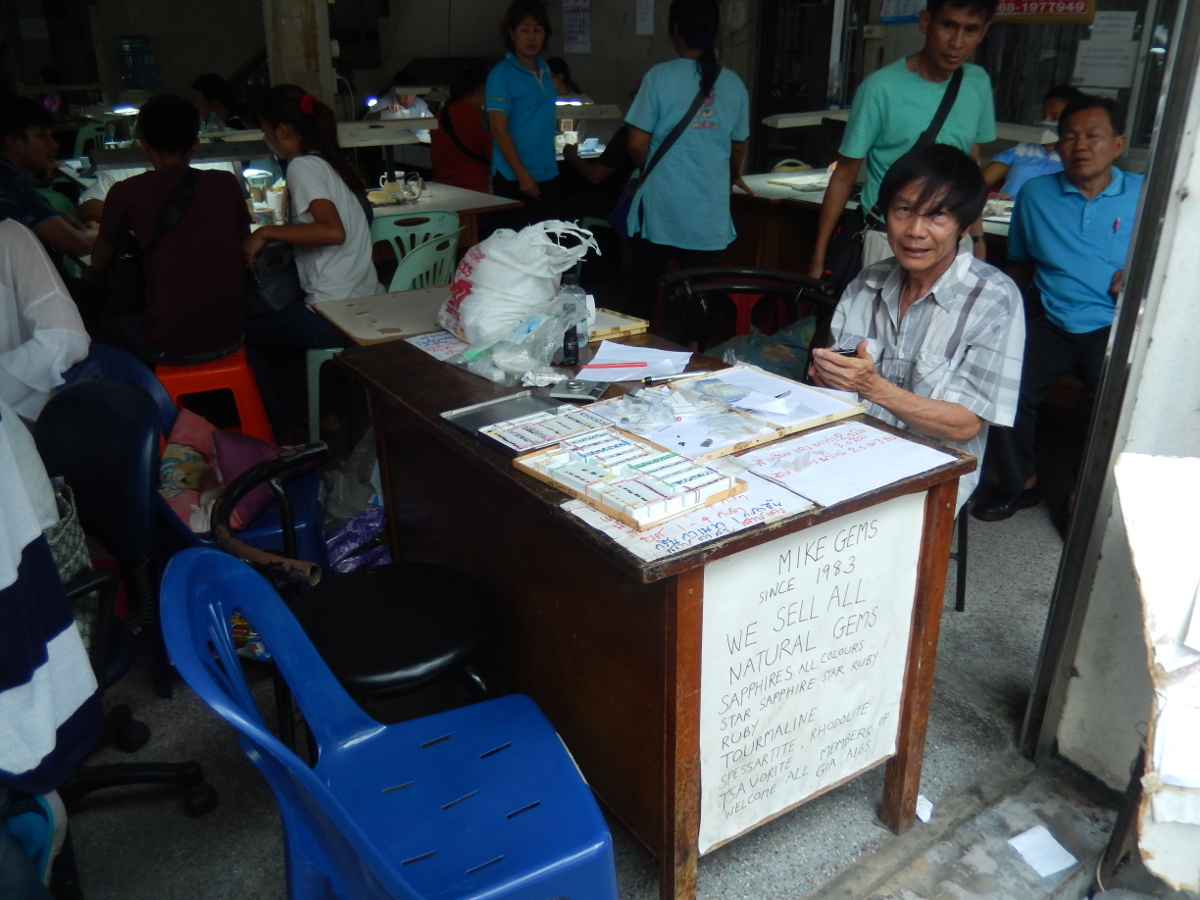 |
During my visit, I was very pleasantly surprised by the friendliness of the Thai people in the Chanthaburi region. I had (rather foolishly) planned to walk from my hotel in Chanthaburi to Khao Ploi Waen (a distance of almost 6 miles). However, once I started wandering through more rural neighborhoods outside of Chanthaburi, several locals (who spoke very little English) offered to give me a ride. I decided to take them up on their offer. They quickly deliverd me to my destination, but they refused the monetary compensation that I tried to give them for their help. Once I had walked all around Khao Ploi Waen, an older local man (who spoke broken English) offered to give me a ride back into Chanthaburi in his manual-transmission, Japanese-made truck. I took him up on his offer, and we had a nice conversation about his life in rural Thailand on the way into town. Again, he refused any monetary compensation, because he said that he wants to help tourists like me. It's nice to be reassured of the goodness of human nature. Similarly, upon noticing that I was an interested but shy tourist, Mike (of Mike's Gems) waved me over to his table and showed me a few of the things that he had to offer. Then, upon learning that I study geology, he offered to sell me a selection of a few small, uncut gemstones that he had stashed away (including a cool piece of zoned sapphire). Being a bad negotiator (didn't inherit that from my mother), I offered him relatively high prices for the stones that I thought were reasonable (although still low in US dollars). He refused those prices, as he said they were too high for me to pay, and instead insisted I pay lower prices that he believed were fair. Quite a fair businessman.
Back to Rocking with the Rocks
Page created on 11/10/2016